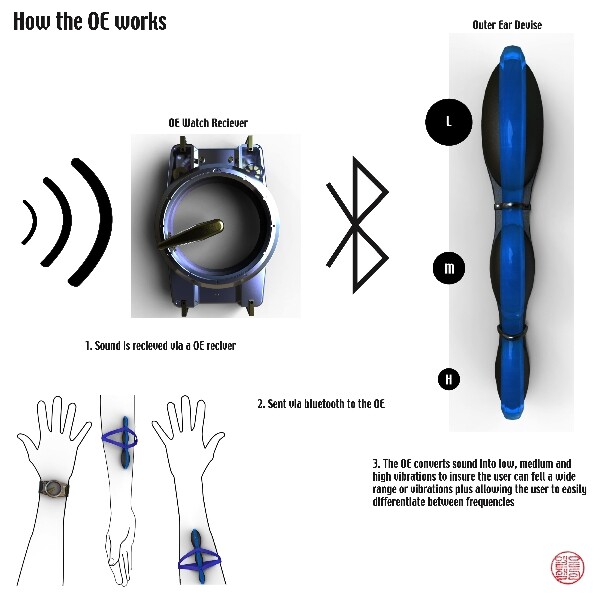The Outer Ear is a non-surgical concept system for the hearing impaired that detects sound-waves and converts them into physical vibration. A watch-like wrist-strap acts as the receiver and transmits a signal via Bluetooth to a device mounted on the arm which in turn converts the sound into low, medium or high vibrations depending on the frequency.
Designed by Jack Allwood, student at Swinburne University Australia, the Outer Ear can be adjusted for outdoors and indoors. The outdoor setting picks up sounds with higher decibels allowing the wearer to feel traffic and other loud noises, while the indoor adjustment picks up sounds more nearby, for instance timers, door bells or even babies and children.
Seen initially as a safety tool for deaf and hard of hearing persons, Allwood suggests that the Outer Ear also has the potential to improve human relationships and aid enjoyment of music by deaf people without the surgery required for devices like the Cochlear implant.

The Outer Ear is one of the student designs been shortlisted for the 2010 Australian Design Awards - James Dyson Award.








